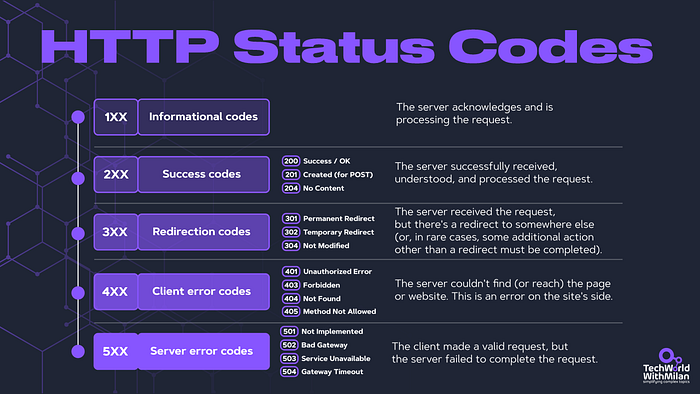“Application Programming Interface,” or API, refers to a communication channel between various software services. Applications that transmit requests and responses are called clients and servers, respectively.
There are different types of API protocols:
- REST — relies on a client/server approach that separates the front and back ends of the API and provides considerable flexibility in development and implementation.
- RPC — The remote procedural call (RPC) protocol sends multiple parameters and receives results.
- SOAP — Supports a wide range of communication protocols found across the internet, such as HTTP, SMTP, and TCP.
- WebSocket — Provides a way to exchange data between browser and server via a persistent connection.
What is an API? (Credits: RapidAPI)
Most of our daily work as software engineers utilizes or creates REST APIs. The standard method of communication between the systems is through APIs. Therefore, it’s crucial to build REST APIs properly to avoid issues in the future. A well-defined API should be easy to work with, concise, and hard to misuse.
Here are some general recommendations:
1. Use nouns instead of verbs
Verbs should not be used in endpoint paths. Instead, the pathname should contain the nouns that identify the object to which the endpoint we are accessing or altering belongs.
For example, instead of using /getAllClients to fetch all clients, use /clients.
2. Use plural resource nouns
Use the plural form for resource nouns because this fits all types of endpoints.
For example, instead of using /employee/:id/, use /employees/:id/.
3. Be consistent
When we say to be consistent, this means to be predictable. When we have one endpoint defined, others should behave similarly. So, use the same case for resources, the same auth methods for all endpoints, the same headers, the same status codes, etc.
4. Keep it simple
We should make naming all endpoints resource-oriented, as they are. If we want to define an API for users, we would describe it as:
/users
/users/124
So, the first API gets all users, and the second one gets a specific user.
5. User proper status codes
This one is super important. There are many HTTP status codes, but we usually use just some. Don’t use too many, but use the same status codes for the same outcomes across the API, e.g.,
- 200 for general success.
- 201 for successful creation.
- 202 for a successful request.
- 204 for no content.
- 307 for redirected content.
- 400 for bad requests.
- 401 for unauthorized requests.
- 403 for missing permissions.
- 404 for lacking resources.
- 5xx for internal errors.

HTTP Status Codes
6. Don’t return plain text
REST APIs should accept JSON for request payload and respond with JSON because it is a standard for transferring data. Yet, it is not enough to return a body with JSON-formatted string; we need to specify a Content-Type header to be application/JSON. The only exception is if we’re trying to send and receive files between the client and server.
7. Do proper error handling
Here, we want to eliminate any confusion when an error occurs. We must handle errors properly and return a response code indicating what happened (from 400 to 5xx errors). We need to return some details in the response body along with a status code.
8. Have good security practices
We want all communication between a client and a server to be protected, meaning we need to always use SSL/TLS, with no exceptions. Also, allow authentication via API keys, which should be passed using a custom HTTP header with an expiration date.
9. Use pagination
Use pagination if our API needs to return a lot of data, as this will make our API future-proof. Use page and page_size is recommended here.
For example, /products?page=10&page_size=20
10. Versioning
It is essential to version APIs from the first version, as our APIs could have different users. This will allow our users to avoid being affected by changes that we can make in the future. API versions can be passed through HTTP headers or query/path params.
For example, /products/v1/4
Also, don’t forget to document your APIs because API will be only as good as its documentation. The docs should show examples of complete request/response cycles. Here, we can use the OpenAPI definition as a source of truth.
To develop APIs, check Swagger and OpenAPI specifications, Postman, or Stoplight.
Thanks for reading, and stay awesome!
Comments